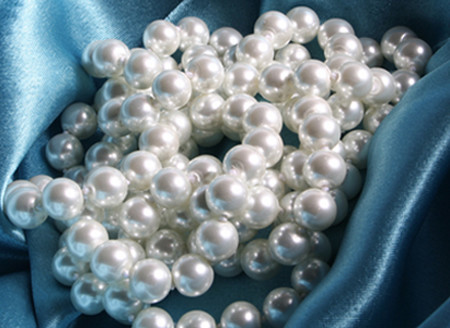Pearl Classification and Grading
For more than 100 years, discoveries in pearl culturing have revolutionized the market and essentially replaced natural pearls in jewelry.
A natural pearl occurs when an irritant, such as a parasite, works its way into a particular species of oyster, mussel or clam. In defense, the mollusk secretes fluid, called nacre, to coat the irritation. Over time, layers of nacre form natural pearl. In cultured pearls, the irritant is a surgically implanted bead or bit of shell.
The ability to consistently generate what was once a rare phenomenon has created a much wider audience for the appreciation and purchase of pearls. But it has also led to confusion about levels of quality and how to determine them. Cultured pearls are produced in a wide variety of colors, shapes, and sizes and grading has become proportionately complex.
GIA describes color in terms of hue,tone andsaturation. Hue refers to the diamond's characteristic color, tone refers to the color's relative lightness or darkness and saturation refers the color's depth or strength. Using highly controlled viewing conditions and color comparators, a fancy color grader selects one of 27 hues, then describes tone and saturation with terms such as "Fancy Light," "Fancy Intense," and "Fancy Vivid." The color system GIA developed is used worldwide.

In response, GIA has created a standard for describing pearl quality just as it did with diamonds. GIA's system, launched in 1998, is based on 7 Pearl Value Factors: size, shape, color, luster, surface quality, nacre quality, and matching.
Contact us on:

